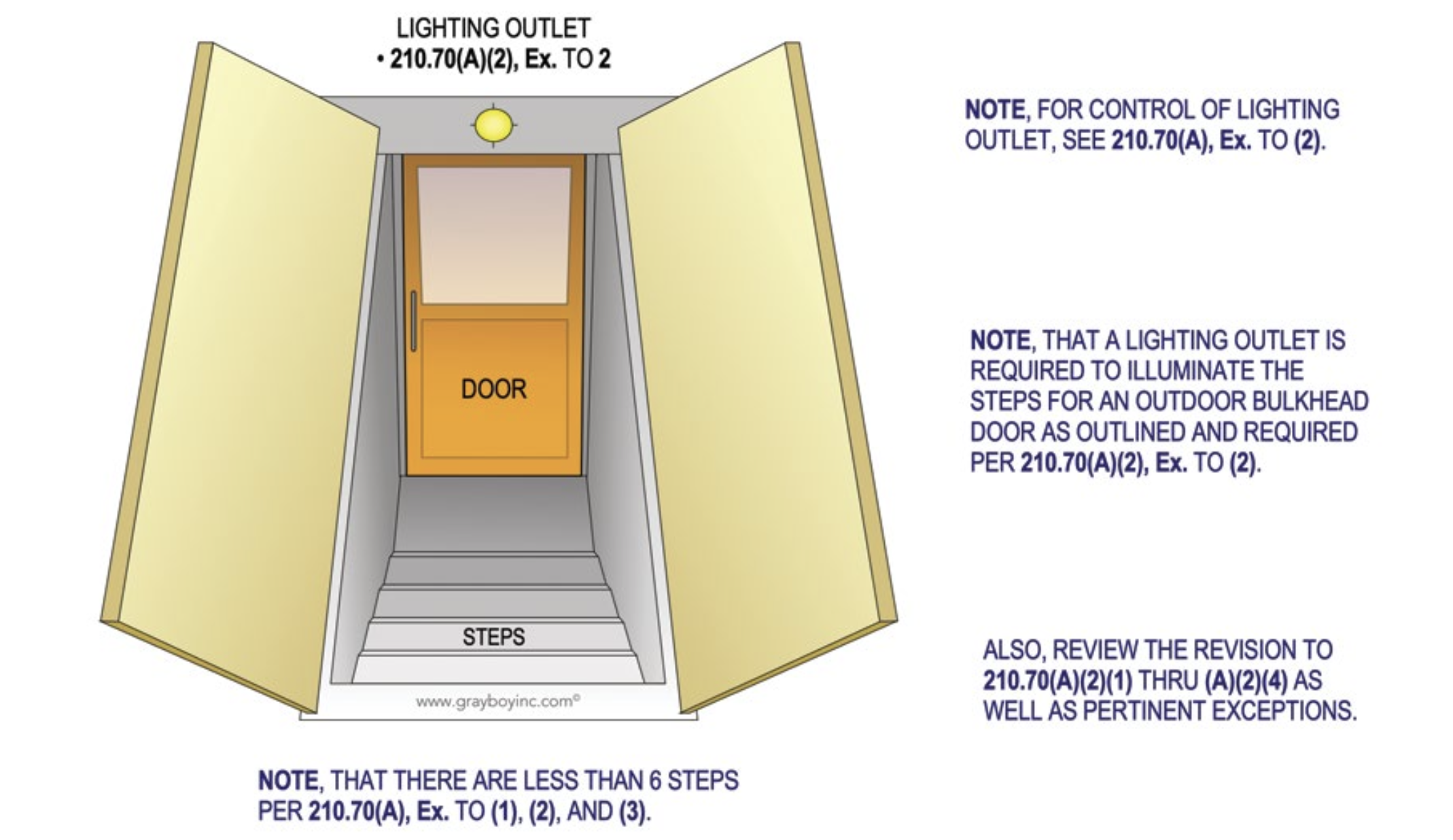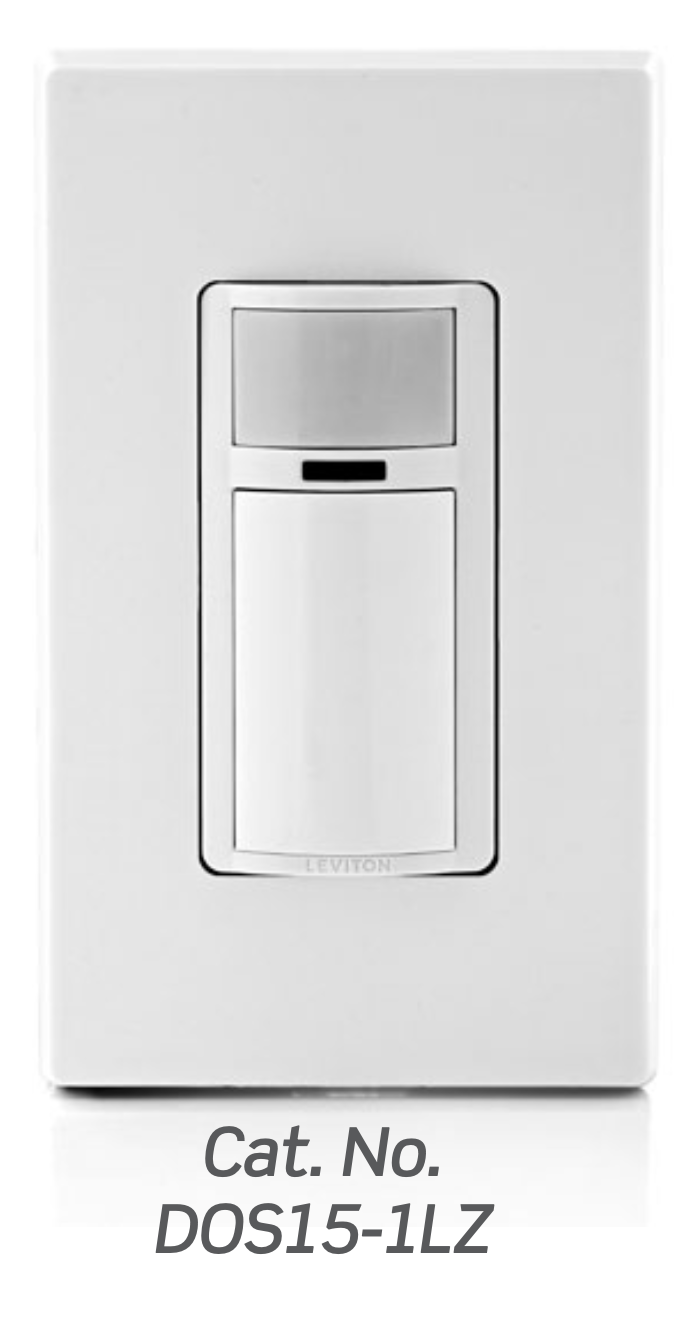210.70(A)(2) Lighting Outlet Locations and Limitations
Change Summary
-
This article clarifies what areas require a light switch and limitations on dimmer use
| NEC®Text |
|---|
|
Article 210 Branch Circuits Not Over 1000 Volts ac, 1500 Volts dc, Nominal Material taken from the National Electric Code. is reprinted with permission from NFPA 70., 2023 edition. National Electrical Code®, Copyright 2022, National Fire Protection Association, Quincy, MA. All rights reserved. |

Expert Analysis
A revision has been made to clarify that accessory structures are similar to attached and detached garages and have been added to the list in Section 210.70(A)(2). Requiring lighting in these areas enhances safety.
In addition, the exception to (2) recognizes bulkhead doors with stairway access to basements. The NEC clarifies that they want these steps illuminated and controlled by a switch.
Leviton Solution
For dark, less traveled areas, motion sensors can be a safe and convenient option. In addition, when using bulkhead doors people are typically carrying storage items. This also makes motion sensors a good choice.
Features 180° PIR field of view, automatic-on/off, single pole, 3-way or multi-location (multi-way) when used with DD0SR switch companions or multi-sensor with two DOS15 sensors. Can be used to comply with 2019 California Title 24, Part 6 Vacancy Control Device Requirements — White with ivory and light almond faceplates included.
|
 |







